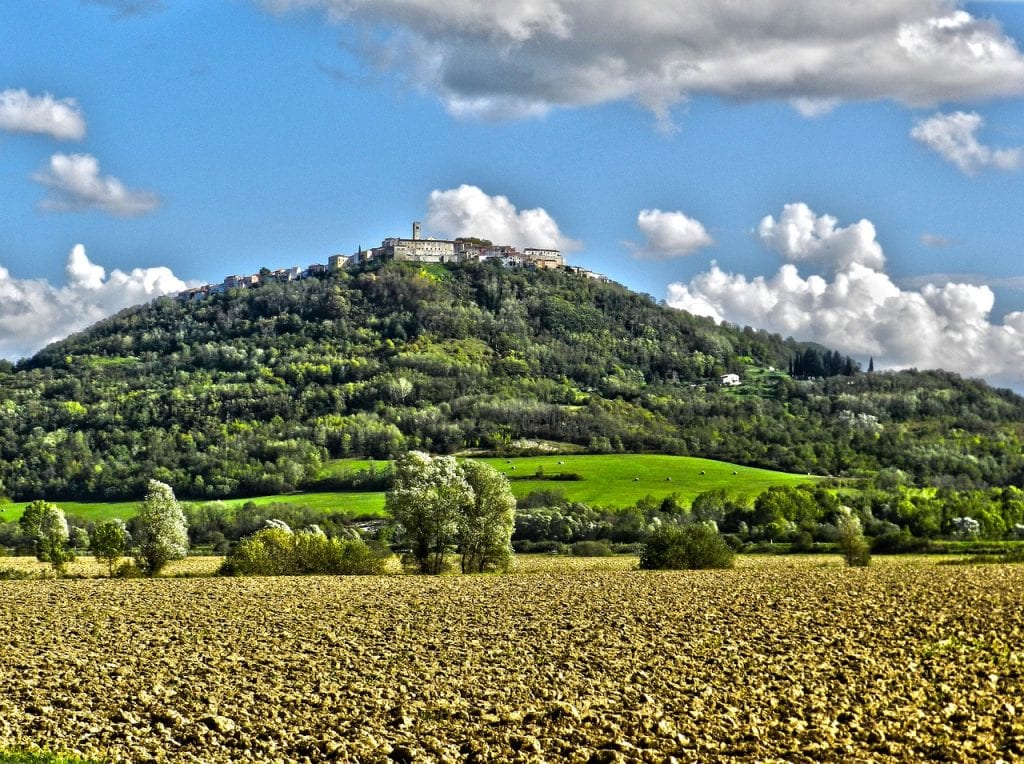Fresh from witnessing a remarkable performance by the Croatian white-wine grape Malvazija Istarska at the Decanter World Wine Awards 2019, Caroline Gilby MW stakes its claim as a great grape and is backed up by a bunch of Australian winemakers.
The more I taste the grape known officially as Malvasia Istriana the more impressed I am, and it’s not just me – 27 gold or silver medals went to this grape at Decanter World Wine Awards 2019. There are lots of grapes in the wine world called Malvasia but this particular one doesn’t appear to be closely related to any of the others nor, as has often been claimed, to any Greek varieties. That’s why I prefer its Croatian name Malvazija Istarska, complete with the letter ‘z’ as this highlights its distinctiveness.
The grape has a long history in its home region and documentary evidence goes back to 1385 when a physician called Bartolo requested a permit to buy 5.5 litres of Malvasia wine. The Greek theory of its origin is linked to the port of Monemvasia, called Malvasia in Italian, from where large amounts of wine under that name were traded in the Venetian era. Scientific analysis of DNA relationships doesn’t support this theory and shows Malvazija Istarska on a different branch to other Malvasias and unrelated to Greek grapes.
The current best guess is that the grape originates somewhere in Istria, the largest peninsula in the Adriatic. Residents here clearly see themselves as Istrian first and then Croatian. This may be to do with the fact that while geography remains fixed, national identities have changed many times in this part of Europe – Istria has been ruled by the Venetian Republic, Napoleon, the Habsburg monarchy, Italy, Yugoslavia and today most of the zone falls into Croatia (which itself joined the EU in 2013) while parts of it lie in Slovenia and in Italy.
The vast majority of the world’s Malvazija Istarska is planted in Croatia where it accounts for 9% of the country’s vines and is the second most planted variety, but pretty much all of it is planted on the rolling hills of Istria on a stunning landscape shared by olive groves and forests full of truffles.
A grape clearly capable of greatness
In my view, Malvazija Istarska has a strong claim to be considered as a great grape variety. In other words, a grape capable of high quality, age-worthy wines and able to reflect a place or terroir. Malvazija Istarska can deliver all this. However, most consumers probably have no idea of this potential as the vast majority is vinified for simple, fresh, summer drinking in stainless steel at a controlled temperature. For most wineries, this is the core of their production – quick to make and quick to sell and perfect for the vast numbers of tourists enjoying the Adriatic coastline. And usually these wines will be consumed within a year to 18 months of the harvest. But this grape also offers lots of options to the ambitious winemaker.
It’s a grape that suits skin contact, more typically cold maceration before fermentation but some producers also go for extended maceration (weeks or even months) along with alcoholic fermentation to make genuinely orange wine styles (Kabola’s Amfora, Roxanich and Clai are notable). These techniques can produce wines with wonderful texture and mouthfeel and with layers of complexity (Kozlović Santa Lucia, Fakin La Prima, Franc Arman, Marijan Arman Riserva are seriously impressive wines in this style).
The grape can also work well with fermentation and ageing in barrels and here options in use include oak, acacia and even mulberry (Tomaz Sesto Senso for instance). In fact, Malvazija often has a gently honeyed character which works particularly well with the fragrance of acacia barrels (Kozlović, Matošević, Damjanić, Vina Laguna all make good versions). It’s also a grape that can work well in blends and there are notably successful examples with Chardonnay (Matošević Grimalda, Saints Hills, Damjanić Clemente, Meneghetti). Sparkling wines and sweet wines are also options – Kabola makes a stylish bottled-fermented Malvazija-based fizz while Benvenuti makes simply gorgeous sweet wines from partially dried Malvazija grapes.
The next challenge for a great grape is to be able to communicate a sense of place. The Istrian peninsula overlays deep limestone bedrock, but soils are varied, including significant areas of rich, rust-red Terra Rossa but also zones with black, grey and white soils which all give distinct styles of wine. One producer, Cattunar, has all four soil types and makes a wine from each. For me, the red soils give the most structured versions and the white soils the most fragrant, while black soils seem to emphasize the fruitiness of the grape with grey somewhere in between.
Finally, ageability – most consumers may only age wines in the boot of the car, but it’s a significant aspect of credibility being able to age wines well and Malvazija can definitely do this. A recent tasting of Vina Laguna’s 2012 Festigia Malvazija showed it to be still elegantly fresh, refined and youthful with a long life still ahead of it, while Kabola’s 2009 Amfora wine is still drinking beautifully.
Malvazija makes it Down Under
They say imitation is the sincerest form of flattery and the news that the Australian authorities are now recommending Malvazija Istarska is definitely flattering – with at least six producers now making wines from it Down Under. For anyone wanting to explore the original model further, the Vinistra wine fair in Poreč in May every year is a great place to taste wines from everyone who is anyone in the world of Malvazija. Exports are relatively limited due to those 18 million tourists (2018 numbers) but in the UK, Croatian Fine Wines, Liberty, Hallgarten & Novum and The Wine Society all have Croatian Malvazija on their lists.
Recommended producers: Benvenuti, Cattunar, Damjanić, Fakin, Franc Arman, Geržinić, Kabola, Kozlović, Marijan Arman, Matošević, Meneghetti, Pilato, Radovan, Saints Hills, Tomaz, Vina Laguna.

